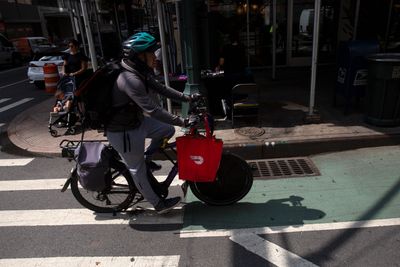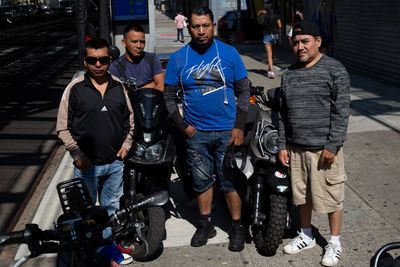Even though the two cities are intertwined in many ways, they each have their own laws and cultural conceptions of privacy. Chula Vista’s drone program has generated controversy while Tijuana’s exists without a great deal of public discussion.
By Julia Wook, Voice of San Diego
In recent years, Chula Vista has positioned its police drone program as a model for cities inside and outside the United States, advising officials from all over the world. Inspired by what it’s seen north of the border, Tijuana officials have launched their own police drone program but with some notable differences.
Both use the drones to assist with emergency calls. But in Tijuana, police proactively fly their drones on occasion to monitor the public space in select neighborhoods.
Even though the two cities are intertwined in many ways, they each have their own laws and cultural conceptions of privacy. One has generated controversy while the other exists without a great deal of public discussion. What they share is a belief that drones are an effective tool for law enforcement.
“We are obviously in the 21st century and it’s time to use technology to benefit police officers so they aren’t exposed unnecessarily and ultimately benefit our citizens,” said Capt. Eduardo Sarquiz Ruvalcaba, who runs the Center for Unmanned Aerial Vehicles of the Ministry of Citizen Safety and Protection in Tijuana.
Chula Vista’s program began in 2016 and can now cover 100 percent of the city. Tijuana’s program began in May 2019 and can cover up to 30 neighborhoods in its flight range, including the city’s center, the financial district, and the restaurant and tourist zones. Tijuana started with two drones and expects to soon have a total of five in operation, and additional launch sites.
Sarquiz Ruvalcaba, also a helicopter pilot, oversees a team of nine Tijuana police officers who are trained as drone pilots. The two-week-long training was conducted by Mexican drone providers, he said.
That team has also forged an alliance with the Club of Drones Tijuana, headed by Carlos Breitling. The group recently aided authorities in the search of a missing boy who drowned off the coast of Baja California.
Those who aided the authorities in the search and rescue mission signed a confidentiality agreement and were carefully selected, Breitling said. “Due to the delicate nature and privacy concerns we turn in the recorded material to the police.”
Other cities in Baja California such as Ensenada and Mexicali also launched a drone program, he said.
Once a drone is launched, the response time to an emergency is usually about 60 to 90 seconds, Sarquiz Ruvalcaba said. The team at the launch site can observe the situation and determine whether they need to dispatch police officers. They observe the situation to ensure they are not prank calls and do not unnecessarily squander resources, said Sarquiz Ruvalcaba.
While Chula Vista’s program has encountered protests and a lawsuit, Tijuana’s program has not faced the same criticism.
“We only launch drones for emergencies,” said Chula Vista Police Capt. Don Redmond. “We do no patrolling whatsoever with our drones.”
Human rights attorney Roxana Rosas Fregoso, a faculty member at Universidad Nacional Autónoma de México, said Mexican authorities have the power to proactively record video or take photographs in public areas in the interest of public safety. But it must be limited to public spaces, not homes or other forms of private property.
Article 16 of the Mexican constitution establishes the institutional right of privacy with regards to families, residences or possessions, said Rosas Fregoso. If photos or video recordings were to be taken and used as evidence, there would need to be a judicial process for review, she said.
But because the technology is still new, “the truth is drones have presented a series of questions with regards to limits and the right to privacy” that haven’t been tested in the courts, she said.
Breitling said the Mexican public does not seem to be concerned about the Tijuana Police Department’s use of drones. But on the U.S. side of the border, Tijuana’s program has drawn some scrutiny from privacy advocates.
Dave Maass, director of investigations for the Electronic Frontier Foundation, acknowledged that the expectation of privacy in public is limited. It becomes a problem, he said, when constant surveillance allows someone to build a picture of your life or discern personal things about you that are unrelated to an investigation.
Maass said more than a thousand police departments across the United States use drones for dangerous incidents like hostage negotiations, and search and rescue missions. What makes the Chula Vista Police Department unique is they use drones as first responders for low-level cases.
“That’s concerning because we’re seeing this shift in policing where the default is surveillance. The default is technology,” said Maass. “No one really knows what kind of impact that’s going to have on people’s civil liberties and their civil rights.”
He also said although Chula Vista and Tijuana are close in distance, they both have fundamental differences in systems of government, criminal problems, and populations with different concerns and needs. “I don’t think anybody should be looking to Chula Vista as a model,” said Maass, citing its close relationship with vendors.
Sarquiz Ruvalcaba said one of the uses for the drones since the pandemic started is to fly overhead neighborhoods with a recorded message to remind people of public health concerns. This was often used to emphasize the importance of things like social distancing, he said.
He added that the drones do not use facial recognition software or record license plates.
Another difference between the two programs is that Tijuana does not release to the public each flight path and description of the incident. Chula Vista does.
Sarquiz Ruvalcaba said his department has nothing to hide but due to concerns for privacy, Mexican law does not yet allow them to share that information with the public. A court order would be needed to share protected information.
This story was first published by Voice of San Diego. Sign up for VOSD’s newsletters here.”





